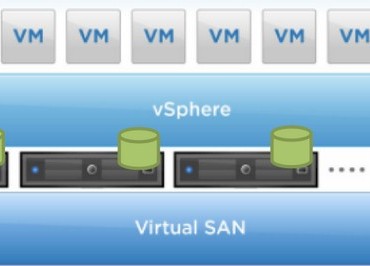EMC, VMware Team On Project Mystic Converged System?

VMware has been touting the benefits of the software-defined datacenter for years, and has made some major investments in virtual networking and virtual storage to make this possible. Now, the rumors are going around that VMware and its parent company, storage giant EMC, are working on a converged system code-named Project Mystic that would bring this software stack together, presumably on X86 systems and popular switches.
Rumors about Project Mystic first surfaced at CRN, which tracks the system reseller market, and the word on the street is that the converged infrastructure appliance will carry an EMC brand. EMC is, of course, a partner with Cisco Systems in the Virtual Computing Environment (VCE) joint venture, which offers a variety of server virtualization and switching options along with EMC and Cisco storage and Cisco Unified Computing System blade and rack servers. These stacks are bundled up and preconfigured for private clouds and sold under the Vblock brand, which started out supporting VMware's server virtualization preferentially but now support the Hyper-V and KVM alternatives. Cisco also has a partnership with EMC rival NetApp to create similar converged systems, called FlexPods, and EMC sells its own converged server-storage stacks, called VSPEX, which support KVM and Hyper-V hypervisors. The Vblocks tend to be aimed at large enterprises, while VSPEX setups are aimed at midrange shops.
The point of a converged system, at least from VMware's point of view, is that it should use the entire stack of software from VMware. Now that VMware is shipping its Virtual SAN extensions to its ESXi hypervisor, the virtualization giant has all three pieces of the virtual system stack. ESXi carves up compute and memory for virtual machines running on server clusters. NSX, which VMware got two years ago from its $1.26 billion acquisition of virtual networker Nicira, is the virtual network layer, which provides virtual switching for virtual machines running on clusters and a Layer 2 overlay for Layer 3 links to hook geographically distributed clusters together and allow VM portability across that overlay. With vSAN, VMware is taking the plain vanilla server clusters and linking them together into a virtualized storage area network, obviating the need for external NAS or SAN storage.
Bringing this entire VMware software stack together and putting it on X86 clusters plus some 10 Gb/sec switches makes perfect sense, and if EMC doesn't do it and VMware doesn't do it, then someone else surely will.
The interesting issue is what networking the two companies will choose to link the nodes in a cluster together. It is possible that EMC and VMware will dodge the issue by selling a single node preconfigured with the VMware software stack and then allowing companies to glue them together with the networking of their choice, including Ethernet and InfiniBand options. That would be the politically safe choice. But then again, the point of converged infrastructure is that it comes from the vendor with servers, storage, switches, and management software all pre-integrated and ready to load up applications, and that means EMC and VMware will have to make some choices.
It will also be interesting to see if the Project Mystic appliance, which could be launched at VMworld in August this year or it could come out in May during the EMC World event, will run on Cisco's UCS blade servers exclusively, on a variety of different machines from selected vendors, or on EMC machines that it OEMs and puts its brand on. For absolute control, the simplest product line, and the best profit margins, the latter option is probably the best one for EMC and VMware alike. The two can make their own SDDC appliance and let the VCE partnership and other system makers craft their own.
What EMC and VMware need to worry about are converged server-storage rivals Nutanix, SimpliVity, and Scale Computing and their rapid rises in the datacenter.











